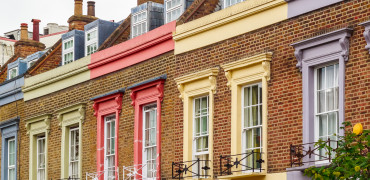People often ask me “who is your favourite architect?”
It is a difficult question to answer sometimes. There is so much good design in the world that over the course my architectural education and career my answer has varied. I’ve always loved the buildings created by the Scandinavian architects Sverre Fehn and Alvar Aalto, as well as that of the British architect Sir David Chipperfield. As you can imagine your tastes and styles change as your career matures.
However, there is one architect whose work stands out beyond all others and I’ve loved everything she has created since I was a boy. My love for her designs has never wavered. They miraculously and effortlessly capture the beautiful and perfect balance between science, innovation, advanced technology, engineering, beauty and, most importantly, ecological design.
She had designed the most amazing structures and habitats that work with the environment, rather than against it. In so many ways her designs achieve perfect harmony.
So, who is this genius architect whose work I believe, has never been surpassed? It is, of course, Mother Nature.
Most of our 27m homes were built before energy use and climate change were fully understood
A bit too 'alternative'
Let’s be honest, back in the 1960’s and 70’s, ‘green design and ecological living’ seemed a bit ‘new-age’, niche and hippy.
The unfair image of ‘eco-houses’ were those self-built by people with beards using mud, straw, clay and whittled timber. It was an architecture that harked back to medieval times.
Eco-design was virtually ignored by the majority of society. I was born in the 1970’s when we used asbestos in buildings and aerosol cans contained ozone-depleting CFCs. Cavity wall construction was begun in new-build houses, but wall insulation was virtually non-existent. You were lucky if you had insulation in your loft! Green design hardly existed and you were even seen as being a bit weird if you were into it.
Unfortunately, this means that most of the 27 million homes we live in today in Britain were built before energy use and climate change were fully understood.
Staggeringly inefficient
Most of our existing housing stock has been built over the last 150 years and because ecological design wasn’t on our radars (even though Mother Nature had been perfecting it, right under our noses, for millions of years) most of our homes are staggeringly inefficient.
Of course when we are designing and building new homes they need to be as ecological as possible. In my view, every single new build home should be SUPER GREEN, making a positive ecological contribution to the environment rather than taking away from it.
But, it is worth noting that we are building less than 200,000 new homes per year, which is only 0.8% of our total housing stock. This means that the ‘future of ecological housing’ really lies in the ecological refurbishment and significant green improvement of our existing homes.
Just imagine how it could be
Imagine a Britain where every single home had triple glazing, super-high performance insulation wrapping our walls, floors and ceilings, homes without gas or oil fired boilers, but with air source heat pumps that capture heat from the outside air to provide comfort and hot water.
Imagine if every existing home was carbon-free and harnessed the very best in innovation and technology to be a natural eco-systems in itself.
Of course, retro-fitting an existing home isn’t always easy. We need manufacturers of building and heating products to innovate at the very highest level to produce products that are designed as part of an ecological ‘circular-economy’ and not from an unsustainable ‘linear-economy.’
We need architects, developers, specifiers and professional installers to come together to ensure excellence in design and installation.
We need to make new products easy to understand as well as being cost effective to help homeowners make the transition from the unsustainable heating systems and poor ecological products they have grown up with for most of their lives, to adopting new products that will hinge the way they live, save them enormous amounts of money over the lifetime of their home and create a ‘healthy-home’ environment that promotes well-being.
Not far or fast enough
We have come along way since the 1970’s, but in my view, we haven’t moved far enough or faster enough.
There is resistance in the building industry to radical change. Cost is always the reason for not doing these things. But, I’m afraid this is a short-term, negative view.
Many of the homes we live in today have been standing, in an ecologically inefficient way, for nearly 100 years. We need to take the long view.
We need an entire cultural shift in the building industry and throughout our society to see that ecological design as an essential part of the design, build and living process on our short time on earth.
If our existing homes are refurbished to the highest quality, harnessing all of the embodied energy in their construction and transforming them into green dwellings for 21st century living, with a long-term maintenance and sustainability programme, then there is no reason why they can’t last another 200 years.
My home was built in 1968. Everyone said it was only good enough for the skip. In fact, it was marked for demolition!
But, I’ve saved it and given it retro-fit for a very reasonable budget. At a fraction of the cost of building a new house. I’ll tell you all about it soon.


